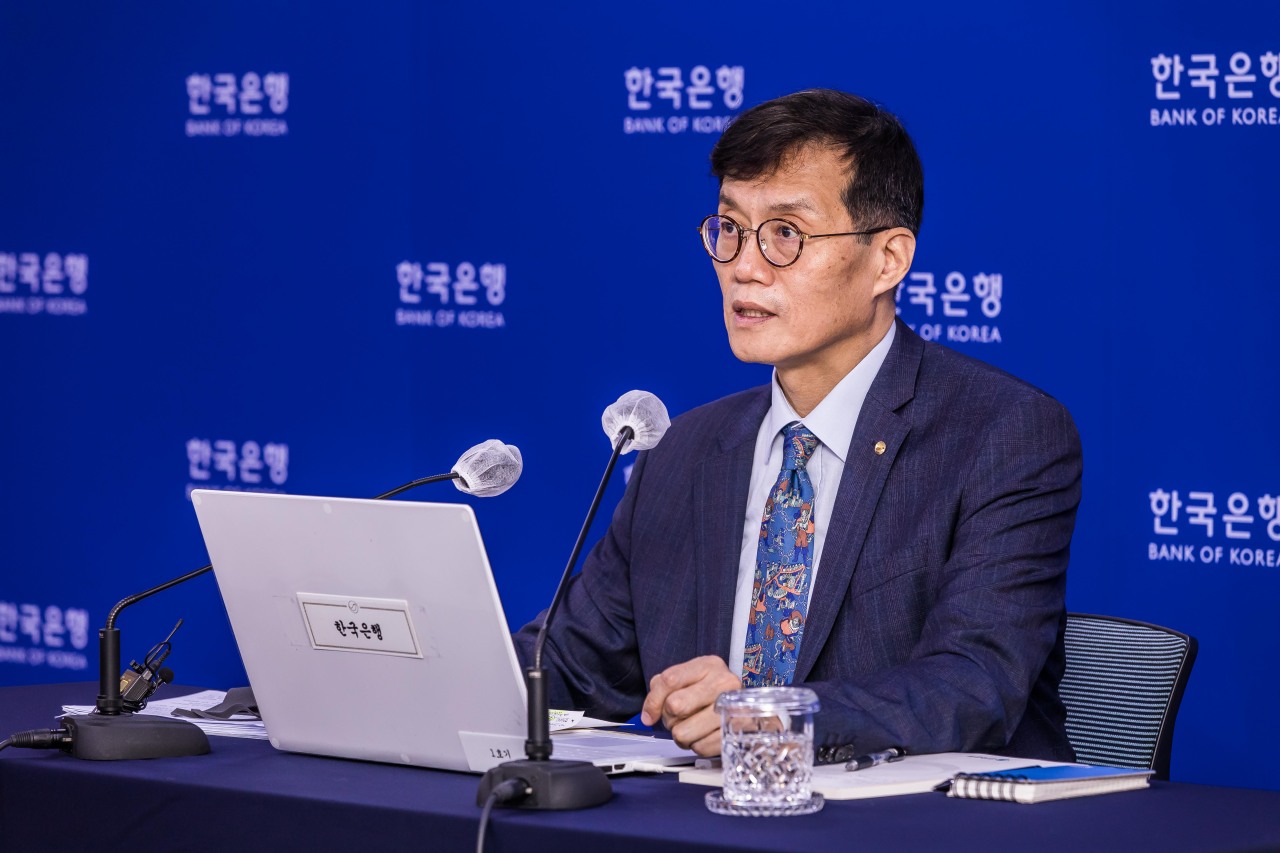The Bank of Korea returned to its usual 25 basis point rate hike Thursday, half the historic size seen in July, while slashing its growth forecast for the year amid the persistent inflation forcing the central bank to back a raise for a fourth time in a row for the first time.
The unanimous decision reached by all seven board members comes as the country fights inflation at an almost 24-year high. In July, prices jumped 6.3 percent on-year. The policy rate now stands at 2.5 percent, up from 1.25 percent in January and closer to the low-3 percent range expected by year-end.
“I can definitively say one thing: the 25 basis point raise is the norm, well for the time being,” BOK Gov. Rhee Chang-yong told reporters after the decision, referring to the next three months. Uncertainties chiefly involving the war in Ukraine prevents the bank from being more certain about any policy shift to take place beyond the time frame, Rhee noted.
But inflation could peak earlier than late September or early October, Rhee added, reversing the bank’s previous estimate. He maintained that the country would still see higher prices, most likely in an annual increase of the 5 percent range, even if the peak is reached.
The bank revised up the inflation forecast for 2022 to 5.2 percent from 4.5 percent, the highest projection since 1998 when the bank declared prices were a priority and began publishing its inflation target, which has been 2 percent since 2019. For 2023, the annual inflation is expected to hit 3.7 percent.
Meanwhile, this year’s growth forecast was also reduced to 2.6 percent, from 2.7 percent earlier, with economic output shrinking further next year to 2.1 percent.
In the remaining months of the year, the export-led economy will see growth momentum weaken on deepening slowdowns in the US and Chinese economies, Korea’s key trade partners, the bank said, adding the trend could run into next year with a drop in the goods surplus.
The latest customs data showed this week that the Korean economy is on track for a five-month streak of monthly trade deficits dating to April. Higher energy bills offset gains in exports.
Nevertheless, Rhee reaffirmed that prices will continue to top the bank’s agenda over growth, unless Asia’s fourth-largest economy deviates dramatically from the path the bank sees as agreeable, in which case the bank will have to rethink its inflation-first strategy.
“Higher prices take a greater toll on the economy,” Rhee said, noting bigger import bills will weigh heavily on not just households facing a surge in food and energy costs, but also the businesses that depend on imports of intermediate goods.
Rhee dismissed worries over stagflation, a coupling of low growth and high prices, saying the current outlook on gross domestic product growth hovering around 2 percent is higher than longer-term growth trends, even if inflation runs at 5 percent. The Korean economy is doing fairly well, compared to its global peers, according to Rhee.
“What Korea faces now, all economic difficulties surrounding inflation, does not compare to what it did back in the 1990s during the Asian financial crisis or in 2008 when the global financial crisis upended the global economy,” Rhee said.
For one, Korea is not burning through currency reserves as it did over two decades ago, Rhee noted, saying the US dollar’s rally is not exclusive to local markets. “This kind of concern more relates to emerging and developing markets. The reserves are strong and our credit ratings are just fine.”
The gap in interest rates between Korea and the US -- whose interest rate is expected to climb to a range of 3.75-4 percent by year-end, according to the most hawkish voices, surpassing Korea’s low-3 percent range -- is seen as prompting investors to flee for higher yields from the dollar. This week, the Korean won weakened to a 13-year low against the US dollar.
“Well if the US raises the rate in September, the gap widens. But does that lead to an immediate capital flight? It’s not that simple,” Rhee said, noting he had not seen outflows in the past when the gap soared by as high as a full percentage point.
Hints about how big an interest rate hike the US Federal Reserve intends to back at its Sept. 20-21 meeting will likely emerge from a speech Chair Jerome Powell will deliver Friday in Jackson Hole, Wyoming, during a three-day gathering that starts Thursday with central bankers and economists from around the world in attendance. Rhee will return from the event Monday.
By Choi Si-young (
siyoungchoi@heraldcorp.com)








